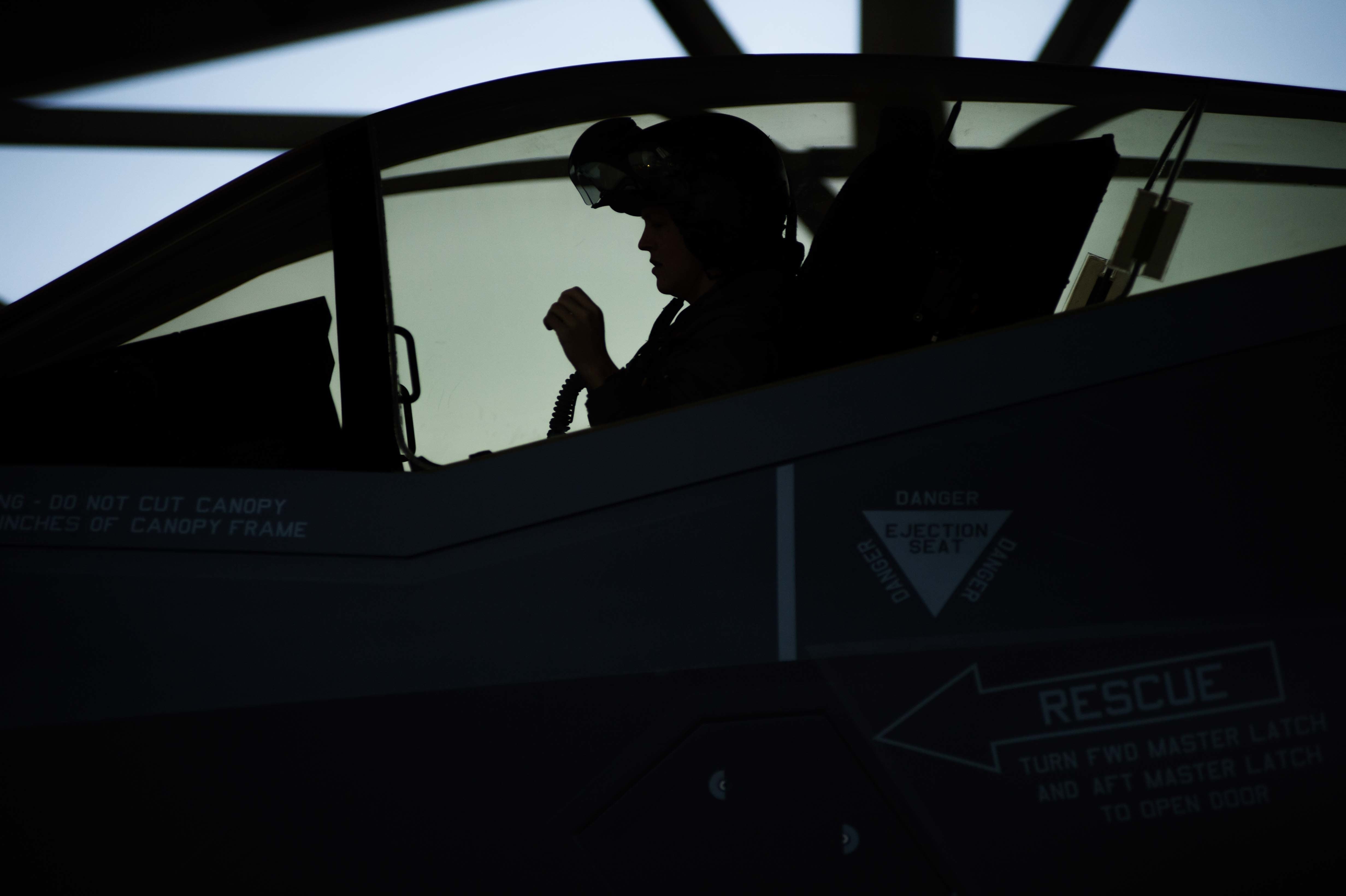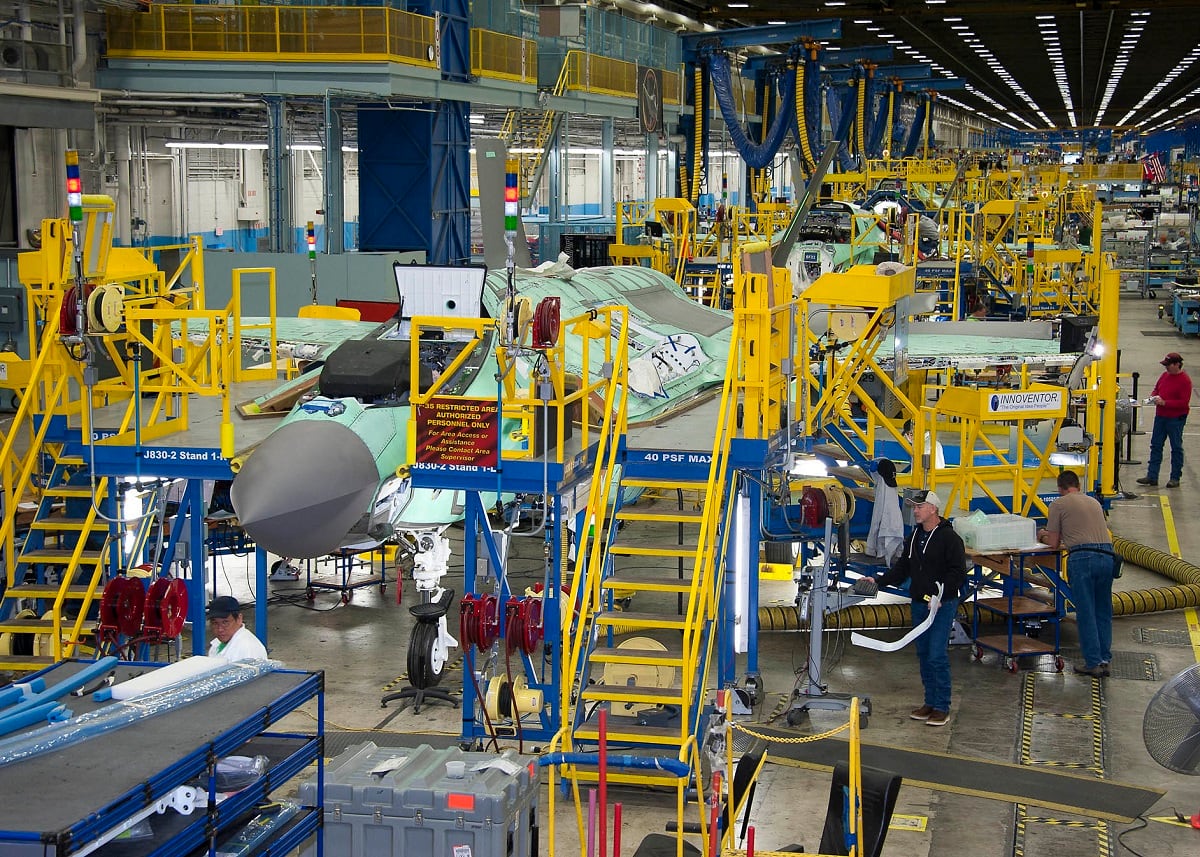WASHINGTON — Lockheed Martin’s F-35 program head on Wednesday refused to commit to fully compensating the U.S. Defense Department for delivering parts not ready to be installed on the jet, which may have resulted in more than $183 million in labor costs.
“It’s not all associated with Lockheed Martin performance. There are many aspects associated with [parts that are] not ready for issue,” Greg Ulmer, Lockheed’s vice president for the F-35 program, told the House Oversight and Reform Committee. “I’m committed to meeting with the Defense Contract Management Agency as well as the [government’s F-35 Joint Program Office] to sit down and reconcile the concerns and adjudicate the cost appropriately.”
It was a response that lawmakers on the committee — which held a hearing July 22 to explore the beleaguered jet’s ongoing sustainment problems — were not happy with.
RELATED

Much of the hearing’s discussion centered on a June 2019 report from the Defense Department’s inspector general, which found that the department may have paid up to $303 million in labor costs since 2015 to correct wrong or incomplete “electronic equipment logs” or EELs. Since then, the Defense Contract Management Agency revised that estimate to at least $183 million, said Rep. Carolyn Maloney, the committee’s chairwoman.
“That’s $183 million that the American taxpayers were forced to pay because Lockheed Martin failed to meet the requirements of its contract,” Maloney said in her opening comments.
The F-35 program is the only program to link an aircraft part to an EEL, which serves as an electronic record of the part’s usage and life span and can be used by the military to inform maintenance and buying practices.
But since 2015, Lockheed has delivered more than 15,000 parts to the U.S. services with incorrect or incomplete EEL information that prevented maintainers from being able to register a part in the F-35′s logistics system, the inspector general report found. As a result, military maintainers and Lockheed support personnel were forced to spend hours troubleshooting these problems, racking up additional costs.
“Every time a pilot gets into those planes and flies into the sky, they’re risking their life,” Maloney told Ulmer. “A contract is a contract. And the contract says you will deliver a plane — which you’ve done beautifully, it’s a beautiful plane. But it also says that the material that is needed to fly that plane have to be delivered too.”

Lt. Gen. Eric Fick, who leads the Pentagon’s F-35 Joint Program Office, said that Lockheed and the department are currently negotiating a compensation package that will allow the government to recoup some of those expenses.
“My understanding is that the team has come to an agreement relative to the magnitude of the issue of the problem, but that the consideration offer demanded has not yet been agreed to,” he said. In other words, Lockheed and the Pentagon have agreed on the scope of the agreement, but not how much money Lockheed will pay back to the department.
Lawmakers asserted that, as Lockheed continues to rake in money from its contracts with the Defense Department, the company should be doing more to invest in solutions to the F-35′s technical problems.
The committee’s top Republican, Rep. James Comer of Kentucky, repeatedly asked Ulmer about Lockheed’s recent earnings and revenue.
“With all of this profit, why is Lockheed failing to fulfill the contract and deliver EELs intact and on time?” Comer said.
Rep. Stephen Lynch, D-Mass., said it was unfair for Lockheed to accept contractually permitted incentive payments when the F-35 has so many issues, and he warned that the company could suffer “reputational damage” unless future contracts become more fair.
“I do believe the F-35 is probably one of the finest aircraft out there — when it flies. When it flies. And that’s the problem,” he said. “So you’re on notice, Mr. Ulmer.”
Ulmer responded that Lockheed has spent $30 million to resolve a problem with the electronic logs, and that the company is negotiating in good faith with DCMA on a financial solution on the labor issue.
“We’ve had six direct meetings with the DCMA since April 2. We were meeting with the DCMA prior to April 2 to work on this issue together,” he said. “You have our resolve to fix this problem.”
Maloney also called on Lockheed to deliver internal documents related to the issue that she requested in a June 18 letter, saying that the company had yet to provide some information.
“It’s upsetting to me. If you can’t deliver a document, I have no trust that you can deliver a plane that’s going to operate [correctly],” she said.
Making improvements
As late as last year, the problem of managing electronic logs for spare parts was so serious and systemic that it was designated a “category 1” deficiency — the Pentagon’s label for critical technical flaws that restrict the jet’s ability to be ready for combat or perform its primary missions.
But on Jan. 13, it was downgraded to the lesser “category 2” status because of “data quality improvements” that “have reduced the frequency and magnitude of issues that have impacted operational units’ abilities to quickly release aircraft for flight following maintenance,” the F-35 Joint Program Office told Defense News in April.
Ever since the IG report was released last year, the Defense Department has taken major steps to try to fix the EEL problem, said Ellen Lord, the Pentagon’s undersecretary for acquisition and sustainment.
“The department has increased the RFI [ready for issue] rate at Hill Air Force Base, Luke AFB, and Marine Corps Air Station Yuma from 43 percent in February, to exceeding the RFI threshold metric rate of 70 percent in every month since April, achieving a high of 83 percent in June,” she said in testimony delivered to the committee.
Action requests made to Lockheed to resolve EEL issues have also sharply decreased, from more than 1,100 requests in March 2020 to 363 in June — lower than the threshold metric of 389, Lord said.

“The F-35 JPO is also working to negotiate more comprehensive contract terms in future sustainment contracts to ensure that the contract has defined EEL and RFI metrics to measure performance,” she said.
Much of the improvement that has occurred since 2019 has been due to reforms put in place by a team made up of government and industry stakeholders, said one defense official, who spoke to Defense News on condition of anonymity.
Of the 65,000 unique parts on the F-35, only about 1,000 have EELs — usually, parts that can be repaired, the official said. All F-35 parts that have an EEL also have a bar code associated with a specific part number, a serial number and a “cage code” that indicates the supplier, as some parts are manufactured by multiple companies.
One of the biggest problems related to EELs occurred when a military base accepted a new spare part. Typically, Lockheed sends each part with an “advance shipping notice,” a set of paperwork that includes information about the part that can be plugged into the F-35′s IT backbone — the Autonomic Logistics Information System, also developed by Lockheed — to process the part and bring up the EEL information.
However, if that advance shipping notice doesn’t arrive, contains incorrect information or doesn’t match with the EEL information, what should be a “six- to eight-step [process]” turns into a “66-step [process],” the defense official said.
In February, the team implemented a number of software fixes for ALIS that would help decrease the number of EEL problems. It also made improvements to the advance shipping notices to ensure that parts arrive properly labeled and with the correct information, the official said.
That month, the team also decided to cut down the number of parts that are associated with EEL records, reducing data-entry requirements. It plans to remove the EEL requirement for 44 percent of air vehicle parts that currently are tracked with electronic logs; and by March 2021, those parts will have gone through the process of having their EELs removed.
The defense official said the program will continue to use EELs for parts that are critical to safety or have a limited life span, but that the program was gathering life cycle data for many parts where that information historically hasn’t been tracked in legacy fighter programs.
“I think when you have the ability to start collecting all kinds of data electronically, maybe we were too aggressive on how many parts we assigned EELs to,” the official said.
Valerie Insinna is Defense News' air warfare reporter. She previously worked the Navy/congressional beats for Defense Daily, which followed almost three years as a staff writer for National Defense Magazine. Prior to that, she worked as an editorial assistant for the Tokyo Shimbun’s Washington bureau.








